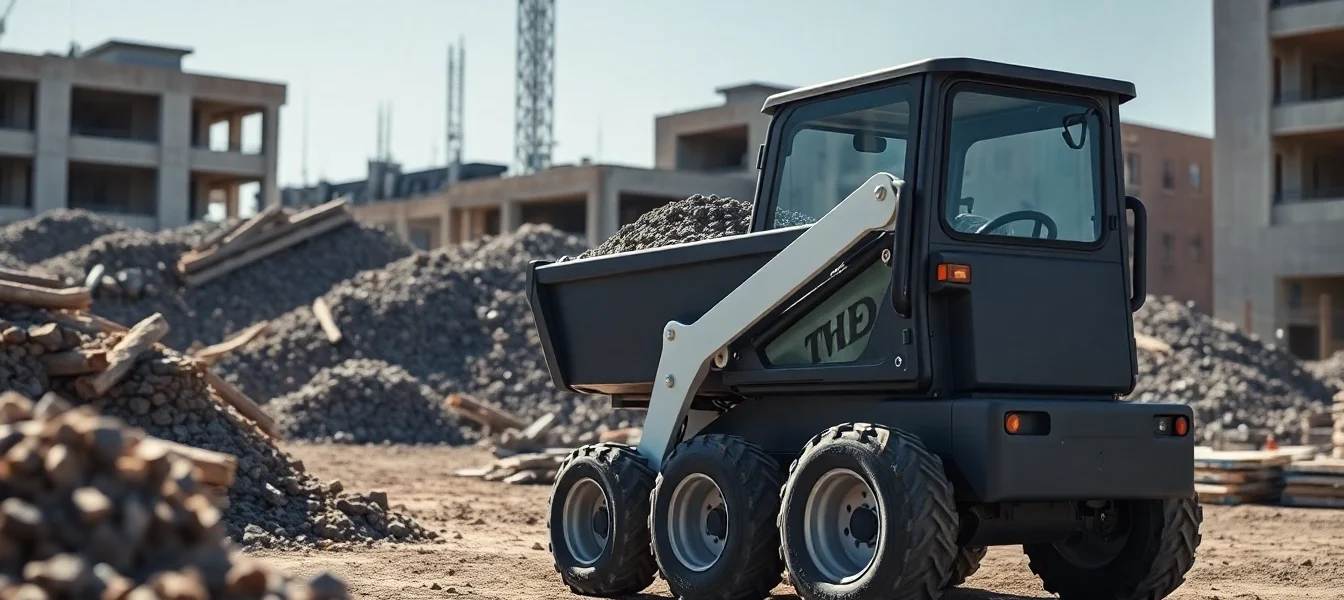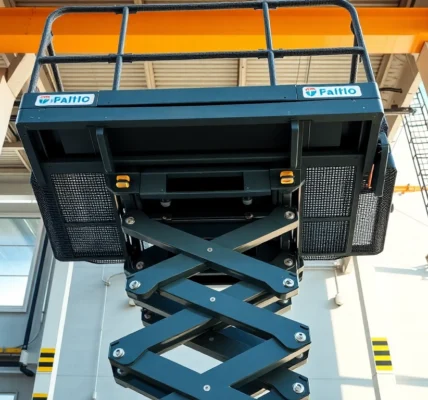Effective Dumper Rental Solutions for Construction and Landscaping Projects
Understanding Dumper Rental: Types and Uses
When embarking on construction, landscaping, or material transportation projects, the importance of efficient and reliable earthmoving equipment cannot be overstated. Among the vital tools used on-site, Dumper rental services stand out as an essential component in ensuring smooth workflow, cost-effectiveness, and safety compliance. Dumper hire offers a variety of models designed to handle different terrains, load capacities, and operational needs. This comprehensive guide explores the various types of dumpers available for rent, their applications across industries, considerations for selecting the right equipment, and best practices to maximize efficiency and safety.
Different Types of Dumpers Available for Rent
Mini Dumpers
Mini dumpers, often weighing less than 1 ton, are compact and highly maneuverable vehicles ideal for tight spaces and confined work areas. They are commonly used in small-scale construction, landscaping, and garden projects where access to larger machinery is limited. For example, a mini dumper can effortlessly operate within narrow pathways and delicate terrain.
Micro Dumpers
Even smaller than mini dumpers, micro dumpers are designed for extreme precision in confined spaces. They typically weigh around 0.25 to 0.5 tonnes, with the ability to negotiate uneven or wet ground conditions, making them perfect for indoor renovation projects or narrow alleyways. Their profile allows them to fit through standard doorways or gateways, streamlining logistical challenges.
Skid Steer and Standard Dumpers
Skid steer loaders equipped with dump functions are versatile, suitable for larger projects requiring significant load capacities. These models can transfer material efficiently across various terrains and are often used in larger construction sites, where their swift maneuverability and power are advantageous.
High Tip and Swivel Dumpers
High tip dumpers are designed for quick unloading into higher containers or skips, reducing manual labor and time. Swivel dumpers, featuring a rotating skip, increase flexibility for unloading in tight or obstructed areas. These features enhance productivity, especially in complex site layouts.
Tracked vs. Wheeled Dumpers
Tracked dumpers provide superior stability and traction on challenging ground, such as mud or soft soil, making them an excellent choice for earthworks and rough terrain. Wheeled dumpers excel on firm surfaces, offering higher speeds and better maneuverability when moving across hard surfaces like pavements and concrete.
Common Applications in Construction and Landscaping
Dumpers serve as cornerstone equipment in various industry sectors due to their capacity to transport bulk materials efficiently. In construction, they facilitate quick removal and delivery of aggregates, soil, bricks, and waste, significantly reducing manual handling and increasing site productivity. Landscaping projects utilize dumpers to move soil, gravel, mulch, and other materials around large outdoor spaces without damaging delicate landscaping features.
In infrastructure development, dumpers are indispensable for large-scale earthmoving tasks such as road construction, dredging, and excavation. Their versatility extends to agricultural and municipal work, where they assist in moving compost, debris, or recyclables. The right dumper model can adapt seamlessly to the project’s scope, terrain, and logistical requirements.
For example, micro dumpers are ideal for urban renovation projects involving narrow streets, while high tip dumpers excel in large open-pit operations or construction yards handling bulk materials.
Factors to Consider When Choosing a Dumper Rental
Project Scope and Load Requirements
Assessing the quantity and type of material to be moved guides the selection of appropriate dumper capacity. Overloading can lead to equipment strain and safety hazards, while underutilization results in inefficiency. For projects involving heavy or bulky materials, opting for larger models like 1-3 ton dumpers is advisable.
Terrain and Site Conditions
Evaluate ground conditions—wet, uneven, or soft terrain necessitates tracked dumpers or models with high traction capabilities to prevent immobilization and ensure safety.
Accessibility and Space Constraints
Narrow or confined spaces favor micro or mini dumpers, whereas open areas support larger equipment. Ensure that the dumper’s dimensions align with site access points to prevent logistical bottlenecks.
Operational Considerations
Consider the power source (petrol, diesel, electric), ease of operation, and the skill level required for safe handling. Some rental providers offer operators alongside machinery, which can be beneficial for complex projects or less-experienced crews.
Budget and Rental Duration
Compare rental costs, deposits, and potential discounts for extended hire periods. Long-term rentals may benefit from negotiated rates, which can considerably reduce overall project costs.
How to Maximize Efficiency with Dumper Rental
Proper Operation and Safety Guidelines
Safety is paramount when operating dumper equipment. Operators should receive adequate training on controls, load handling, and site-specific hazards. Always wear PPE (personal protective equipment), follow manufacturer instructions, and implement site safety protocols such as clear signage and designated routes.
Routine checks before use—including inspecting hydraulic lines, brakes, and tires—help prevent breakdowns and accidents.
Maintenance Tips for Rental Dumpers
Even when rented, proper maintenance extends equipment lifespan and maintains operational efficiency. Cleaning and inspecting the dumper after each use, lubricating moving parts, and reporting issues promptly to the provider are best practices. Documenting maintenance helps in tracking performance and planning future rentals.
Optimizing Load Capacity and Usage
Maximize efficiency by balancing load size with the dumper’s rated capacity. Overloading can cause mechanical stress and safety hazards, while underloading underutilizes potential. Use proper loading techniques, such as spreading material evenly and stacking efficiently, to accelerate unloading and reduce cycle times.
Digital tools and site planning software can help coordinate dumper routes and schedules, minimizing idle time and unnecessary travel.
Pricing Strategies and Budgeting for Dumper Hire
Understanding Rental Costs and Deposits
Rental pricing varies based on dumper size, rental duration, and supplier policies. Typical day rates range from approximately £75 to £150, with discounts available for longer periods. Deposits are often required to cover potential damages or late returns. It is essential to clarify all charges beforehand, including delivery, pickup, fuel, and insurance costs.
Comparing Prices of Different Suppliers
Conduct market research by obtaining quotes from multiple providers, considering their reputation, equipment availability, and added services like operator support or maintenance. Online comparison tools can streamline this process, revealing competitive rates and package deals.
Cost-Efficiency Tips for Long-Term Rentals
For ongoing projects, negotiating rental contracts can yield significant savings. Bundled services, extended rental discounts, and priority access to equipment ensure project continuity and budget adherence.
Locating Reliable Dumper Rental Providers Near You
Key Questions to Ask Rental Companies
- What is included in the rental price (delivery, operator, maintenance)?
- Are there options for extended or short-term rentals?
- What safety and operational training do you provide?
- What are your policies on damages, breakdowns, and replacements?
- Can you supply different dumper models suitable for my project?
How to Find a Dumper Hire Near Your Location
Use online directories, industry-specific platforms, and local trade associations to identify reputable rental providers in your area. Keywords such as “dumper truck hire near me” or “mini dumper hire [your location]” can yield targeted results. Request quotes and reviews to assess reliability.
Evaluating Service Quality and Customer Support
A trustworthy supplier offers prompt customer service, transparent pricing, and flexibility in booking and delivery arrangements. Visiting their physical depot or requesting client testimonials can help verify their standards.
Advanced Tips: Enhancing Your Project with Dumper Rental
Integrating Dumper Use into Larger Projects
Coordinating dumper operations with other equipment such as excavators, loaders, and compactors streamlines workflows. Establish clear communication channels and detailed schedules to prevent bottlenecks.
Using Specialized Dumpers (Micro, High Tip, Tracked)
Tailor your dumper choice to specific challenges—use micro dumpers for indoor or narrow areas, high tip dumpers for fast unloading, and tracked models for rough terrain. Combining these within a project increases overall efficiency.
Case Studies and Successful Projects Featuring Dumper Hire
Numerous construction companies have reported significant time and cost savings by integrating dumper hire into their workflows. For example, a landscaping firm reduced material transport time by 30% using micro dumpers in confined city-center projects. Such successes highlight the value of choosing the right dumper and using it strategically.


